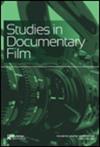美丽的夜蛾Chasmina pulchra (Doubleday)(鳞翅目:夜蛾科)是一种高度分散的物种,现已在澳大利亚南部城市kurrajongs Brachychiton populneus中发现
IF 0.8
4区 综合性期刊
Q3 MULTIDISCIPLINARY SCIENCES
Transactions of the Royal Society of South Australia
Pub Date : 2023-08-31
DOI:10.1080/03721426.2023.2250552
引用次数: 0
摘要
本文章由计算机程序翻译,如有差异,请以英文原文为准。
The beautiful noctuid moth Chasmina pulchra (Doubleday) (Lepidoptera: Noctuidae) is a highly dispersive species, now established on urban kurrajongs Brachychiton populneus in southern Australia
ABSTRACT We report the establishment of the beautiful noctuid moth Chasmina pulchra in southern Australia following repeated self-introduction. First recorded in 1955 as a vagrant in suburban Adelaide, specimens have been collected or observed at an increasing rate since then. We have recently located a breeding population on the Adelaide Plains where the larvae feed on the introduced kurrajong tree Brachychiton populneus (Malvaceae), although other Brachychiton species are likely to be exploited elsewhere in its range. Native to the drier parts of eastern Australia, this drought-tolerant tree has been widely grown as a specimen or amenity tree in suburban Adelaide since the mid-nineteenth century. Chasmina pulchra appears to have an annual life cycle in South Australia, with adult moths active in the summer, December – March. Larvae cause characteristic scalloping on the leaf margins of the food plant. We present evidence that this tropical to subtropical native species has expanded its range into the southern half of the continent in the last few decades. We also report the first specimen collected in northern Tasmania, associated with a weather system that could have facilitated its movement across Bass Strait. Southward incursions are associated with both wetter and drier than average monthly rainfall totals just prior to the event. Together with recent records from southwestern Australia well beyond the natural range of a putative food plant, we conclude that C. pulchra is a highly dispersive species, behaviour consistent with at least one other species of Chasmina in the Old World.
求助全文
通过发布文献求助,成功后即可免费获取论文全文。
去求助
来源期刊
CiteScore
1.40
自引率
12.50%
发文量
17
审稿时长
>12 weeks
期刊介绍:
Published since 1880, the Transactions of the Royal Society of South Australia is a multidisciplinary journal that aims to publish high quality, peer-reviewed papers of particular relevance to Australasia.
There is a particular focus on natural history topics such as: botany, zoology, geology, geomorphology, palaeontology, meteorology, geophysics, biophysics, soil science and environmental science, and environmental health. However, the journal is not restricted to these fields, with papers concerning epidemiology, ethnology, anthropology, linguistics, and the history of science and exploration also welcomed.
Submissions are welcome from all authors, and membership of the Royal Society of South Australia is not required.
The following types of manuscripts are welcome: Reviews, Original Research Papers, History of Science and Exploration, Brief Communications, Obituaries.

 求助内容:
求助内容: 应助结果提醒方式:
应助结果提醒方式:


